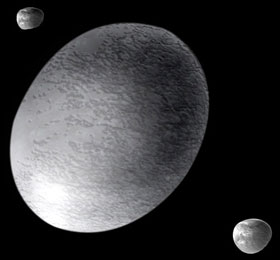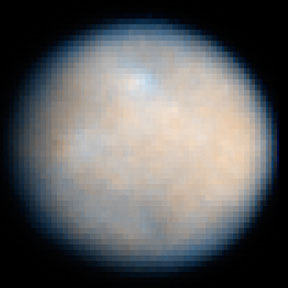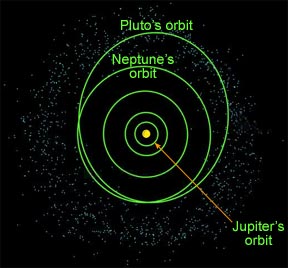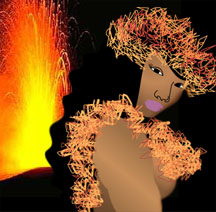Click on image for full size
Images courtesy of NASA, ESA, and A. Feild (STScI).
Moons of the Dwarf Planet Haumea
Haumea is a dwarf planet in our Solar System. Haumea is the fifth object officially classified as a dwarf planet; the previous four are Pluto, Eris, Ceres, and Makemake. The International Astronomical Union announced Haumea's official status as a dwarf planet in September 2008. Haumea has known moons, both discovered in 2005.
The larger moon, Hi'iaka has a diameter of about 310 km (193 miles). It orbits Haumea once every 49 days at a distance of 49,500 km (30,758 miles). Hi'iaka was discovered on January 26, 2005 by a team of astronomers led by Mike Brown of the California Institute of Technology. It appears that the surface of the moon is covered with ice.
Namaka is the smaller moon. It is roughly 170 km (106 miles) across. Namaka orbits Haumea every 34.7 days at a distance of 39,300 km (24,420 miles). Namaka was discovered on June 30, 2005, though the discovery announcement wasn't made until November 29, 2005. It was also discovered by Mike Brown's group.
Astronomers think Haumea may have collided with another large object a long time ago. This suspected collision may have produced the dwarf planet's odd shape and high rotation rate. It may have also created Haumea's moons as leftover debris from the collision coalesced.
In Hawaiian mythology, Haumea is the goddess of fertility and childbirth. Her children include Hi'iaka and Namaka, as well as the Hawaiian volcano and fire goddess Pele. Namaka was a sea goddess or water spirit. Hi'iaka was the patron goddess of hula dancers. In one Hawaiian myth, Haumea's children were born by springing from various parts of the body of their mother. This is especially apt in light of the theory about a massive collision in Haumea's past. Perhaps the two moons did, indeed, "spring forth" from the body of their "mother".
Mike Brown's team at Caltech first noticed Haumea shortly after Christmas in 2004. They used the nickname "Santa" to refer to the new object until an official name was determined. Sticking with this theme, the Caltech team nicknamed Hi'iaka "Rudolph" and Namaka "Blitzen"!











